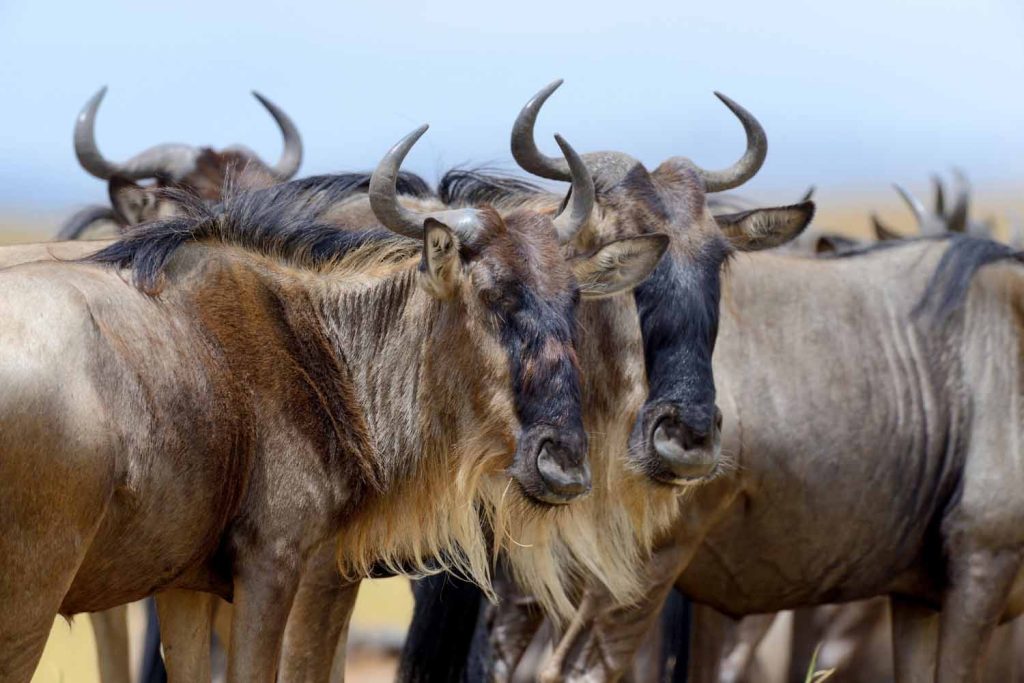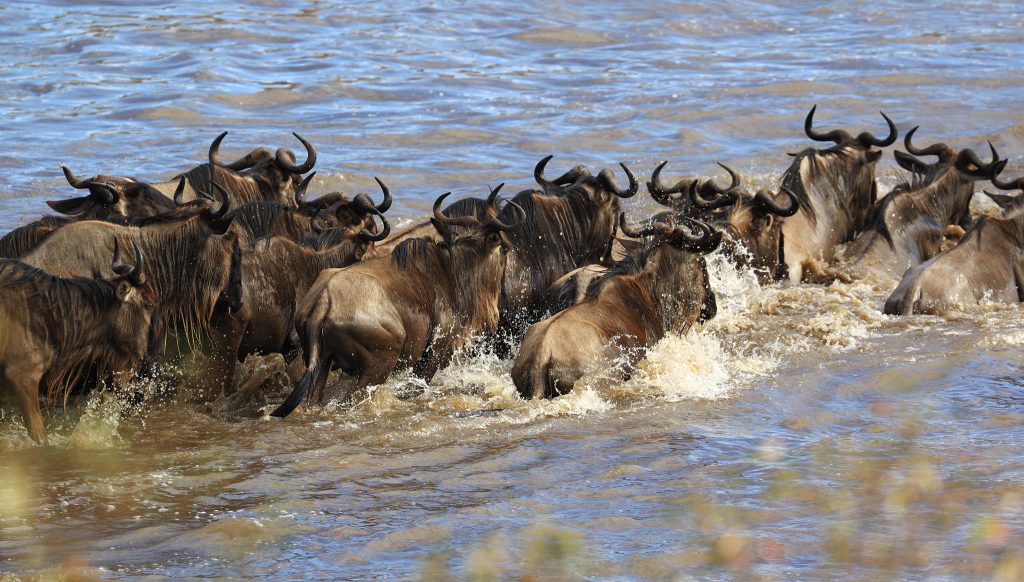Where to stay for The Great Migration in Tanzania
The Great Wildebeest Migration – the annual migration of giant herds of grazers across Northern Tanzania and Kenya is a truly spectacular event. Over two million wildebeest, zebras and gazelles move through the Serengeti and Masai Mara ecosystems in search of green pasture, in a regular pattern. This is surely one of the greatest wonders of the natural world.

The wildebeest migrate around the Serengeti, and into the Masai Mara for the sole purpose of following the rainfall. For their calving from December – March they always begin their cycle in the Southern Serengeti area of Ndutu and follow wherever the grass is greener… Whilst we have a good idea of where the wildebeest should be at any given time of year, it really does depend on where the rain falls. The wildebeest are notoriously unreliable, as although they generally all head from south to north Serengeti and back around again, they often zig-zag along the way, making it sometimes impossible to predict where the big herds will be at any given time.

Throughout the entire year, the wildebeest herds are always in Tanzania. For a short time of the year some of the herds are in Kenya. This time period is from July – October when the wildebeest are always crossing the Mara River in Tanzania between Kogatende and the Lamai wedge (the land between the Mara River and the border to Kenya). The herds are sometimes crossing the Mara river from one side of the Masai Mara to the other (all in Kenya). So the famous river crossings are most likely to be seen in Tanzania. Tanzania also has far fewer tourists on any one crossing, so we would always recommend basing yourself in northern Serengeti as opposed to the Masai Mara to catch the wildebeest crossing the Mara River.
Explore one of Africa’s most iconic safari destinations on game drives and guided walks across the Serengeti’s open savannah plains. Tick Tanzania’s many birds off your list, and spend the evenings gazing at the stars, as plentiful as the migratory herds (Wilderness Experiences Nature).
What sets us apart at Nature & Leisure in Africa is our expertise in organizing safe and unforgettable trekking adventures to Mount Kilimanjaro, Africa’s highest peak.